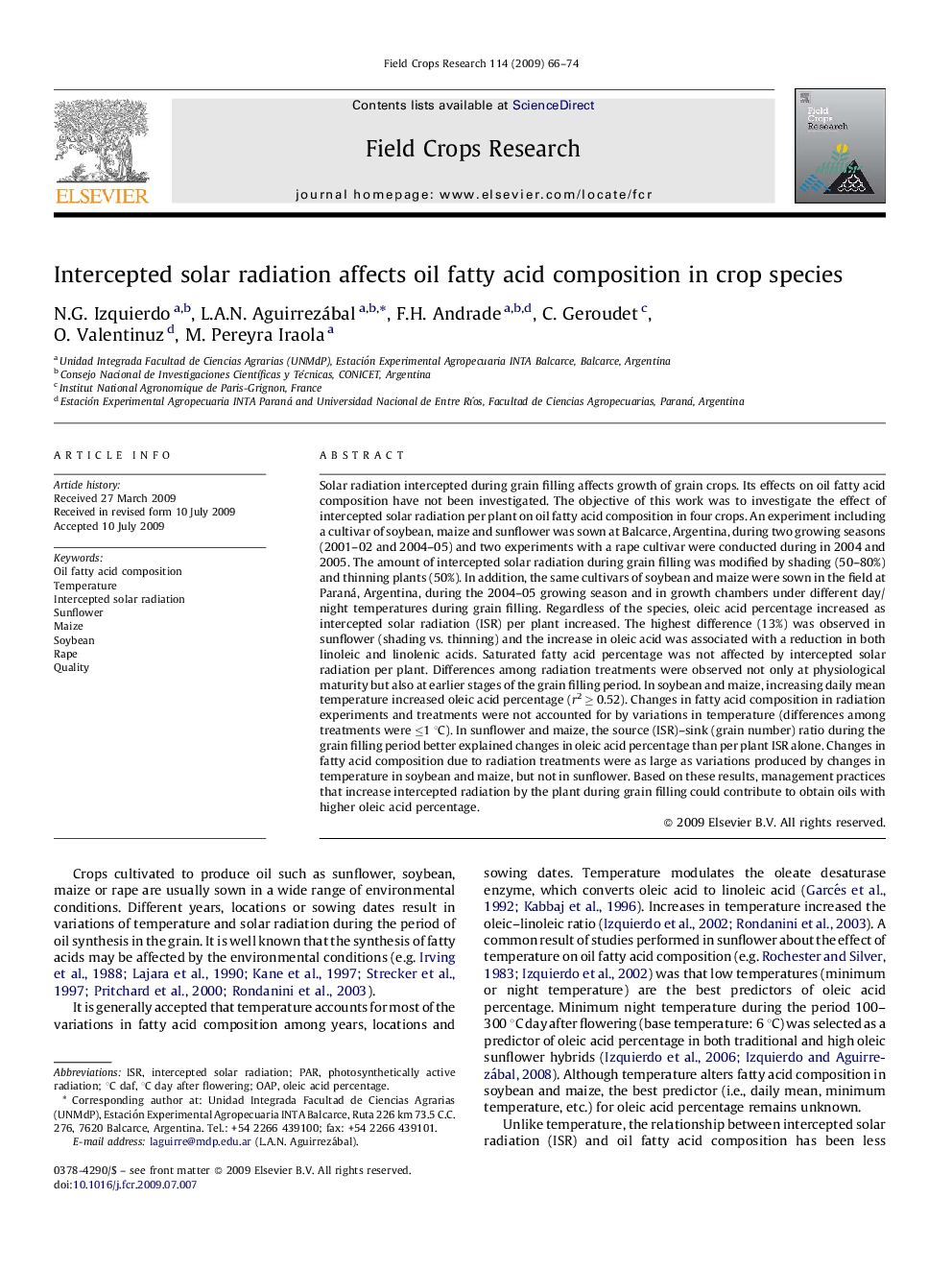| کد مقاله | کد نشریه | سال انتشار | مقاله انگلیسی | نسخه تمام متن |
|---|---|---|---|---|
| 4511166 | 1321895 | 2009 | 9 صفحه PDF | دانلود رایگان |

Solar radiation intercepted during grain filling affects growth of grain crops. Its effects on oil fatty acid composition have not been investigated. The objective of this work was to investigate the effect of intercepted solar radiation per plant on oil fatty acid composition in four crops. An experiment including a cultivar of soybean, maize and sunflower was sown at Balcarce, Argentina, during two growing seasons (2001–02 and 2004–05) and two experiments with a rape cultivar were conducted during in 2004 and 2005. The amount of intercepted solar radiation during grain filling was modified by shading (50–80%) and thinning plants (50%). In addition, the same cultivars of soybean and maize were sown in the field at Paraná, Argentina, during the 2004–05 growing season and in growth chambers under different day/night temperatures during grain filling. Regardless of the species, oleic acid percentage increased as intercepted solar radiation (ISR) per plant increased. The highest difference (13%) was observed in sunflower (shading vs. thinning) and the increase in oleic acid was associated with a reduction in both linoleic and linolenic acids. Saturated fatty acid percentage was not affected by intercepted solar radiation per plant. Differences among radiation treatments were observed not only at physiological maturity but also at earlier stages of the grain filling period. In soybean and maize, increasing daily mean temperature increased oleic acid percentage (r2 ≥ 0.52). Changes in fatty acid composition in radiation experiments and treatments were not accounted for by variations in temperature (differences among treatments were ≤1 °C). In sunflower and maize, the source (ISR)–sink (grain number) ratio during the grain filling period better explained changes in oleic acid percentage than per plant ISR alone. Changes in fatty acid composition due to radiation treatments were as large as variations produced by changes in temperature in soybean and maize, but not in sunflower. Based on these results, management practices that increase intercepted radiation by the plant during grain filling could contribute to obtain oils with higher oleic acid percentage.
Journal: Field Crops Research - Volume 114, Issue 1, 1 October 2009, Pages 66–74